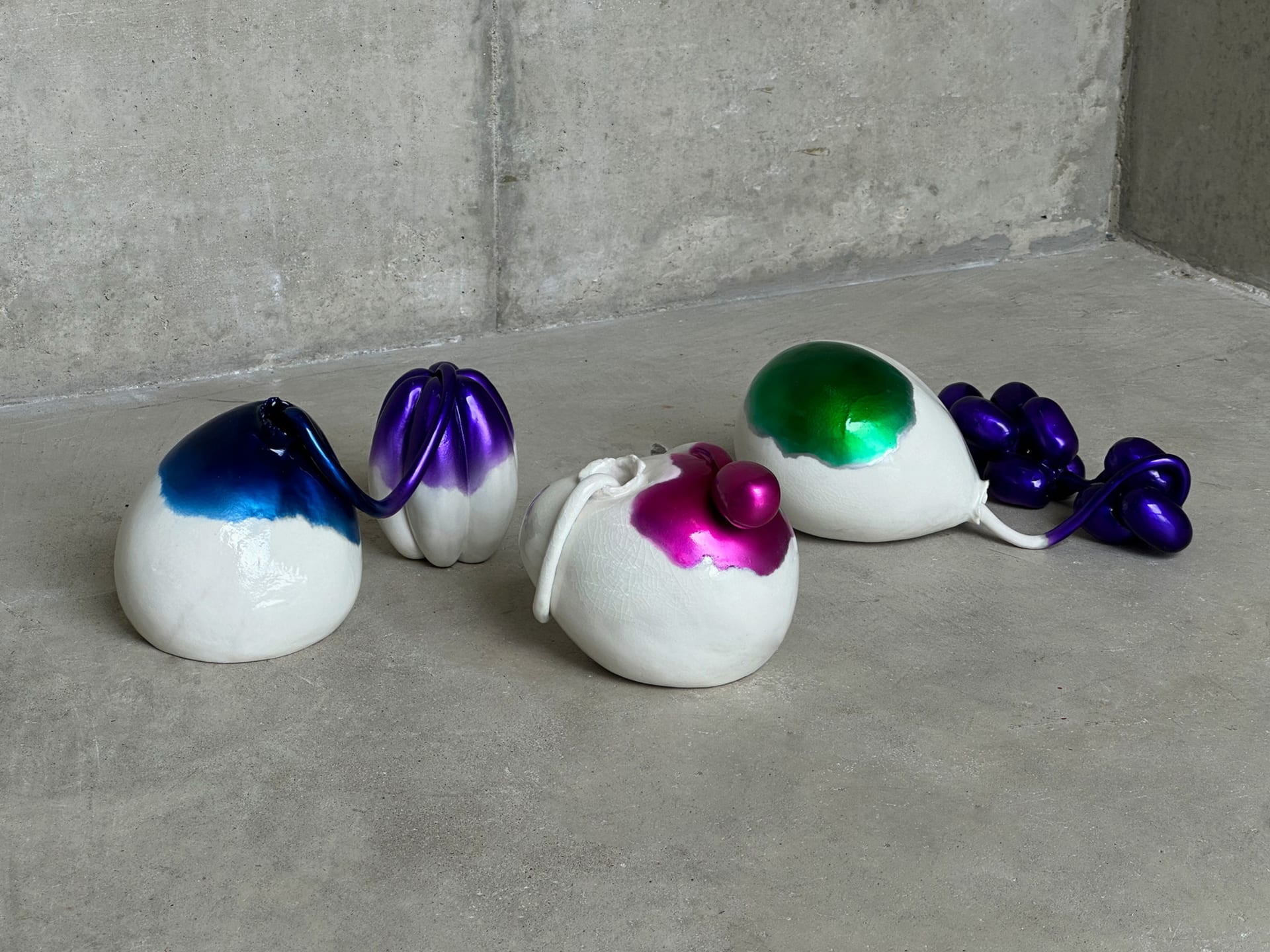Ga Yoon is a Korean ceramic artist, who works with a belief that ceramics and the arts not only provide aesthetic values but also they can work as a medium of communication. Prior to joining the Ceramics and Glass MA at the Royal College of Art, she received a Graduate Diploma in Fine Art at the same college. Before coming to the UK, she studied for a BA in Ceramic Design at Sangmyung University in South Korea, where she focused on expressing identity and personality change through the art of ceramics.
Ga Yoon Lee


As a ceramic artist, I work on the function of ceramics as a tool to convey messages so that my artworks can raise public awareness of the power of words that can either stimulate or even hurt others.
Inspired by Korean culture of social comparison, I began to focus on the power of words and its effect. In Korea, the words, Eomchina and Eomchinddal were once in fashion: this means ‘my mother’s friend’s smart son (i.e., Eomchina) or daughter (i.e., Eomchinddal)’ who has either achieved academic success or receive a high salary as they are employed by a leading company.
In fact, it was usually used when Korean parents tried to encourage their kids to study or work harder by comparing them with their friends’ son or daughter, but ironically it discouraged their children, and I was one of them.
I truly believe that a word like comparison, negative feedback or even compliment has the power to either negatively or positively impact on people’s character formation, especially when they are children.
My point of view is also supported by an experiment conducted by the Swedish company, IKEA; in 2018, the company recorded positive and negative words separately and played the recordings to each plant respectively for a month, and the result was fascinating, as the one which received compliments flourished but the one that was bullied withered significantly.
To express my intention, I made plaster moulds with balloons, and cast them to make flower and seed shapes using a press moulding technique. Also, I assembled them to represent flowers breaking out from seeds as if words came out of a person’s mouth, and then I crumbled the surfaces of some balloon-shaped castings. Through the work, I wanted to express that sometimes words could work as a beautiful and fragrant flower for others, but at the same time they could have thorns, which can hurt someone.
In addition, by adopting the concept of balloons which children usually play with, I wanted to suggest audiences feel two different feelings: while they feel happiness by looking at the pieces of adorable and harmless objects, but at the same time when looking into the torn and crumbled works, they can feel uncomfortable.
With the desire to provide deep perception to audiences through ceramics, I would like to show recognition of wrong behaviours and linguistic cues of harming others and deliver an anti-bullying message: “a negative mind will never give a positive life” (Hamilton, 2017).










